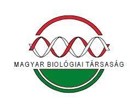Néhány vízi szervezet ciánérzékenységének vizsgálata a tiszai ciánszennyezés kapcsán
Absztrakt
A mérgező szennyvizek nem megfelelő tárolása hatalmas környezeti veszély forrásává válhat. A ciánszennyezés ökológiai katasztrófát előidéző hatására a 2000-ben bekövetkezett romániai cianidszennyeződést követően figyelt fel a világ. A cián mérgező hatásának kimutatására eltérő érzékenységű szervezetekkel toxikológiai vizsgálatokat végeztünk. Meghatároztuk a Tisza jellegzetes fajának a tiszavirág (P alingenia longicauda) lárváinak, illetve még 7 gerinctelen és 3 halfaj kálium cianidra (KCN) vonatkozatott 50%-os letális koncentrációját (LC50).
A vizsgálati eredményeink alapján megállapíthatjuk, hogy az összes tesztelt faj közül a Palingenia longicauda lárvája a legérzékenyebbek, illetve ugyancsak nagy fokú érzékenység jellemzi a mezofauna elemek közül a rákokhoz tartozó Daphnia magna-t és a Gammarus fossarum-ot. A vizsgált halfajok közül a bodorka (Rutilis rutilus) és a vörösszárnyú keszeg (Scardinius erythrophtahlmus) a kárászhoz képest nagyobb érzékenységűnek bizonyult. A zooplanktont alkotó Copepoda faj, a gyűrűsférgekhez tartozó Tubifex, és a vizsgált puhatestű faj ciánrezisztensnek tekinthető.
A kutatási programunk másik része a P. lomgicauda kérészfaj magyarországi és németországi folyóvizekbe való visszatelepítésének vizsgálata.
Hivatkozások
Andrikovics, S. & I. Turcsányi (2001): Tiszavirág. - Tisza Klub Füzetek 10: 1-69.
Clutius, A. (1635): De hemerobio sire Ephemero insecto et majali verme: 96. 100 - Amsterdam.
Oertel, N., J. Nősek & S. Andrikovics (2001): Mesterséges alzatok alkalmazása a kolonizáció vizsgálata során. - Hidrológiai Közlöny 81: 438-440.
Regős, J., Milinki, É., Mester, J., Murányi, Z. & Andrikovics, S. (2006): Tiszavirág-lárvák, és más tiszai szervezetek cián-érzékenységéről. Acta Acad. Paed. Agr. Nova Ser. Tom.
Szitó, A., Papp, Zs. & Végvári, P.(2001): Üledéklakó gerinctelenek pusztulásának aránya különböző cianid koncentrációk hatására téli-és nyári hőmérsékleten. - Hidrológiai Közlöny 81: 474-476.
Swammerdam, J. (1752): Bibel der Natur (Haft, Uferaas): 100-114. - J. F. Gleditschens Buchhandlung, Leipzig.
Varga, 1, Körösi, R, Balaskó, M. & Naár, Z.(2004): Assessing cadmium distribution applying neutron radiography in moss trophical levels in Szarvaskő, Hungary, Applied Radiation and Isotopes 61. 647-651.
Zsuga, K., & O. Kiss (2001): A cianid- és nehézfém szennyezés hatásának vizsgálata a Közép-Tisza vidékén a bioindikátor tegzesekre. - Hidrológiai Közlöny 81: 510-511.






